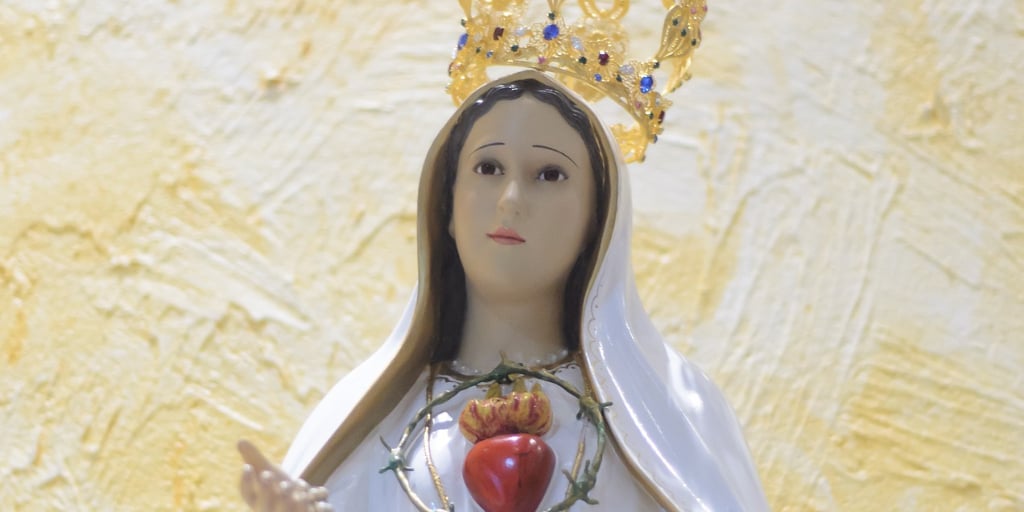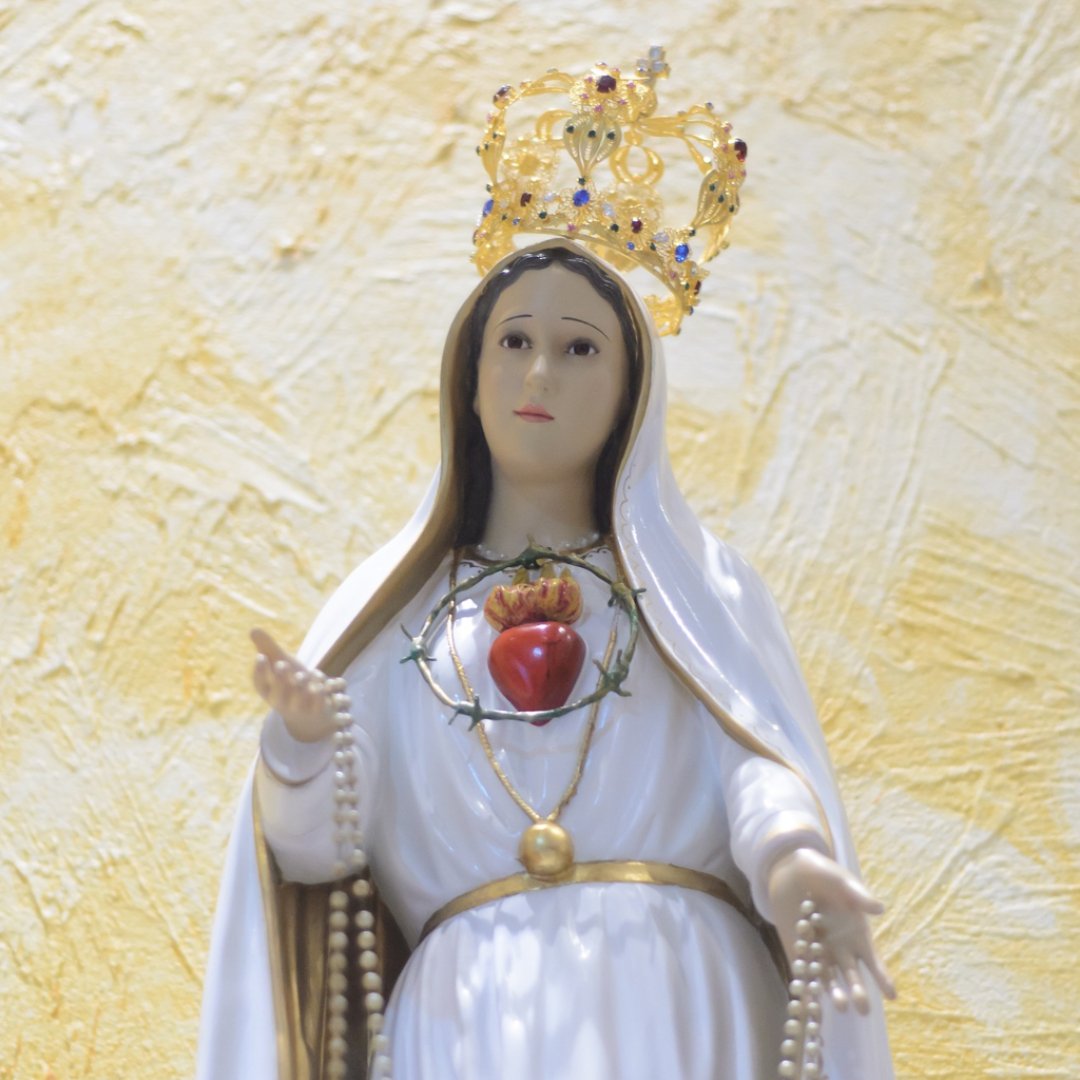
Flávia Ghelardi ponders the suffering of Mary after the Ascension of Jesus: her martyrdom for love of us.
Flávia Ghelardi writes from Brazil in English and Portuguese. Vá para a versão em português.
The book Conchita's Spiritual Journey by Fr. Ignacio Navarro narrates the stages of the spiritual life of Blessed Concepcion Cabrera de Armida. Known as "Conchita," she was a wife and mother of 9 children, mystic and founder of several religious families, who had private revelations of Jesus Christ through interior locutions, that is, they were not strictly visions of Jesus, but she "heard" Jesus speaking interiorly to her heart. Even though she was beatified on May 4, 2019, no Catholic is required to believe these revelations; however, the Church attests that there is no theological error in them.
The book has several accounts of these "conversations" she had with Jesus, and we can see how Jesus is preparing her for all the graces He grants her to fulfill her mission here on earth. Of all these extraordinary experiences narrated in the book, the one that caught my attention the most was when Jesus reveals to her about the martyrdom of the heart of Mary Most Holy.
Mary's suffering was allowed by God not to purify her, unlike the suffering of all other human beings, but to ask forgiveness and atone for the sins of others, it was for the purification of her children. Mary's heart gained these graces after the Ascension of Jesus, when she suffered the martyrdom of feeling alone and helpless.
This deep loneliness was not in relation to human beings or the lack of Jesus' physical presence, for since she is a perfect creature and has a huge living faith, she was consoled by the real presence of Jesus in the Eucharist.
What she experienced was what St. John of the Cross calls the "dark night," a deep spiritual abandonment, the divine abandonment of the Trinity, which hid themselves from her. This infinite abyss of love was her great trial.
Mary suffered more than all souls because she suffered a reflection of Jesus' abandonment on the cross and there is no comparison in human language. Her martyrdom was of love and the helplessness that enveloped her for so many years was an act of love of God the Father who wanted to pour out the treasures and the sea of his graces on souls through this suffering of our Heavenly Mother.
During Jesus' life, although Mary knew and reflected His inner pain in her, Jesus' filial love watched over that pain so that she suffered less. But after the Ascension, these martyrdoms wounded her with all their intensity and bitterness, pouring out of her pure soul for the good of her children until the end of the world.
How much humanity owes to Mary Most Holy! And how these bitter sorrows are not known, honored or appreciated! In this year when we will celebrate the solemnity of the Ascension of Jesus to Heaven on the day of Our Lady of Fátima, let us remember this martyrdom of the Immaculate Heart of Mary and, with our prayers and mortifications, console our dear Mother and Queen who suffered so much for us.
A NOITE ESCURA DO IMACULADO CORAÇÃO DE MARIA
O livro “Conchita´s Spiritual Journey” do Pe. Ignacio Navarro narra os estágios da vida espiritual da beata Concepción Cabrera de Armida, conhecida como “Conchita”, uma esposa e mãe de 09 filhos, mística e fundadora de várias famílias religiosas, que tinha revelações privadas de Jesus Cristo através de locuções interiores, ou seja, não eram estritamente visões de Jesus, mas ela “ouvia” Jesus falar interiormente a seu coração. Mesmo tendo sido beatificada em 04 de maio de 2019, nenhum católico é obrigado a acreditar nessas revelações, porém a Igreja atesta que não há nenhum erro teológico nas mesmas.
O livro possui vários relatos dessas “conversas” que ela tinha com Jesus e podemos perceber como Jesus a vai preparando para todas as graças que Ele lhe concede para cumprir sua missão aqui na terra. De todas essas experiências extraordinárias narradas no livro, a que mais me chamou atenção foi quando Jesus lhe revela sobre o martírio do coração de Maria Santíssima.
O sofrimento de Maria foi permitido por Deus não para purificá-la, ao contrário do sofrimento de todos os outros seres humanos, mas para pedir perdão e expiar os pecados dos outros, foi para a purificação de seus filhos. O coração de Maria ganhou essas graças após a Ascenção de Jesus, quando sofreu o martírio de se sentir sozinha e desamparada.
Essa profunda solidão não era em relação aos seres humanos ou à falta da presença física de Jesus, pois como ela é uma criatura perfeita e tem uma enorme fé viva, ela era consolada pela presença real de Jesus na Eucaristia.
O que ela experimentou foi o que S. João da Cruz chama de “noite escura”, um profundo abandono espiritual, o divino abandono da Trindade, que se escondeu dela. Esse abismo infinito de amor foi sua grande provação.
Maria sofreu mais que todas as almas porque ela sofreu um reflexo do abandono de Jesus na cruz e isso não há nenhuma comparação na linguagem humana. O seu martírio foi de amor e o desamparo que a envolveu por tantos anos foi um ato de amor de Deus Pai que queria derramar os tesouros e o mar de suas graças nas almas através desse sofrimento de nossa Mãe do Céu.
Durante a vida de Jesus, apesar de Maria saber e refletir a dor interna dele nela, o amor filial de Jesus velava essa dor para que ela sofresse menos. Mas depois da Ascenção, esses martírios a feriram com toda sua intensidade e amargura, derramando de sua alma pura para o bem de seus filhos até o fim do mundo.
Quanto a humanidade deve a Maria Santíssima! E como essas amargas dores não são conhecidas, honradas ou apreciadas! Nesse ano em que celebraremos a solenidade da Ascenção de Jesus ao Céu no dia de Nossa Senhora de Fátima, vamos recordar esse martírio do Imaculado Coração de Maria e, com nossas orações e mortificações, consolar um pouco nossa querida Mãe e Rainha que tanto sofreu por nós.
Copyright 2021 Flávia Ghelardi
Image: Pixabay (2015)
About the Author

Flávia Ghelardi
Flávia Ghelardi is the mom of four, a former lawyer already "promoted" to full time mom. Flávia published her first book FORTALECENDO SUA FAMÍLIA and is a member of Schoenstatt´s Apostolic Movement. Flávia loves to speak about motherhood and the important role of women, as desired by God, for our society. She blogs at www.fortalecendosuafamilia.blogspot.com.



.png?width=1806&height=731&name=CatholicMom_hcfm_logo1_pos_871c_2728c%20(002).png)
Comments